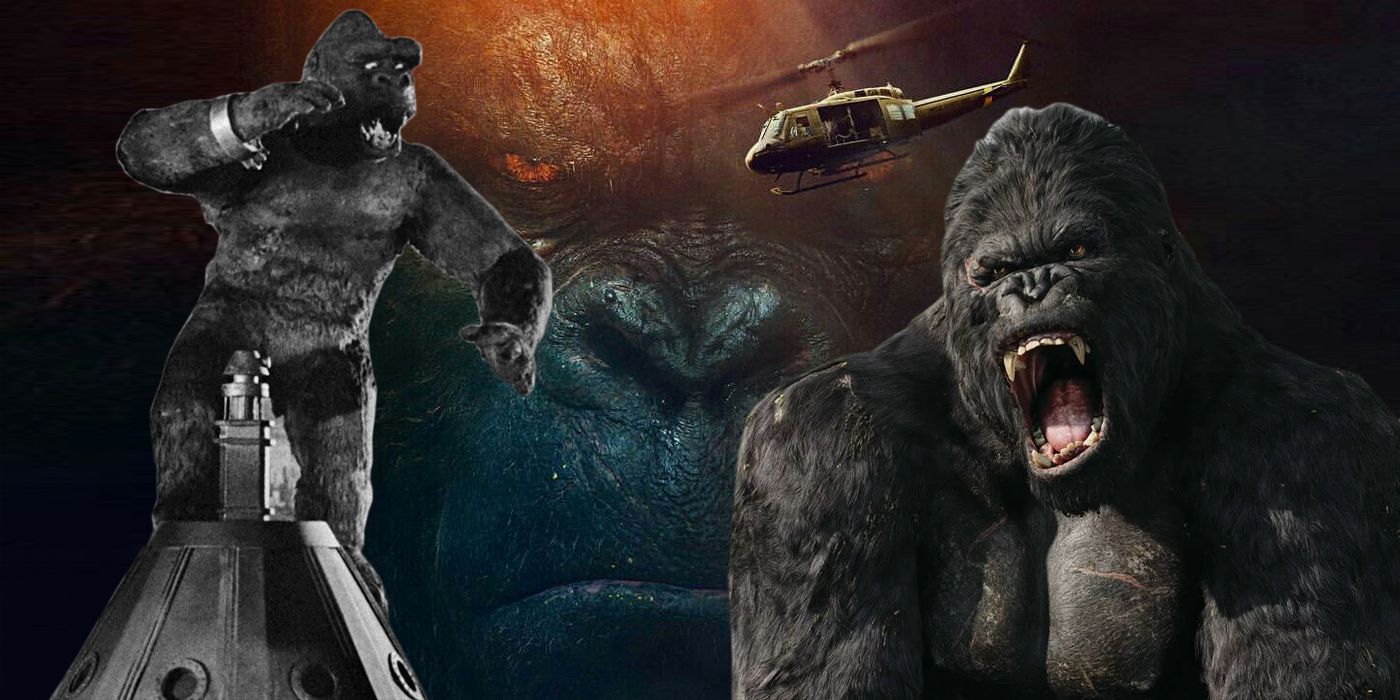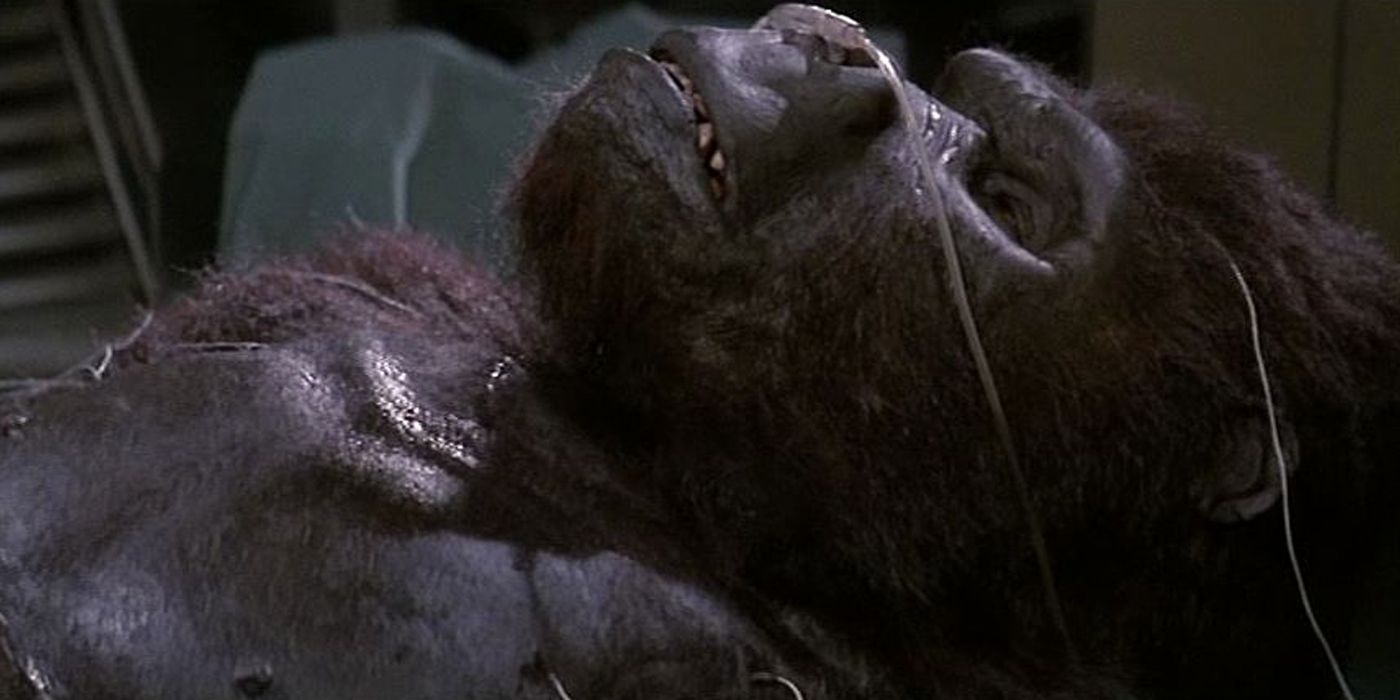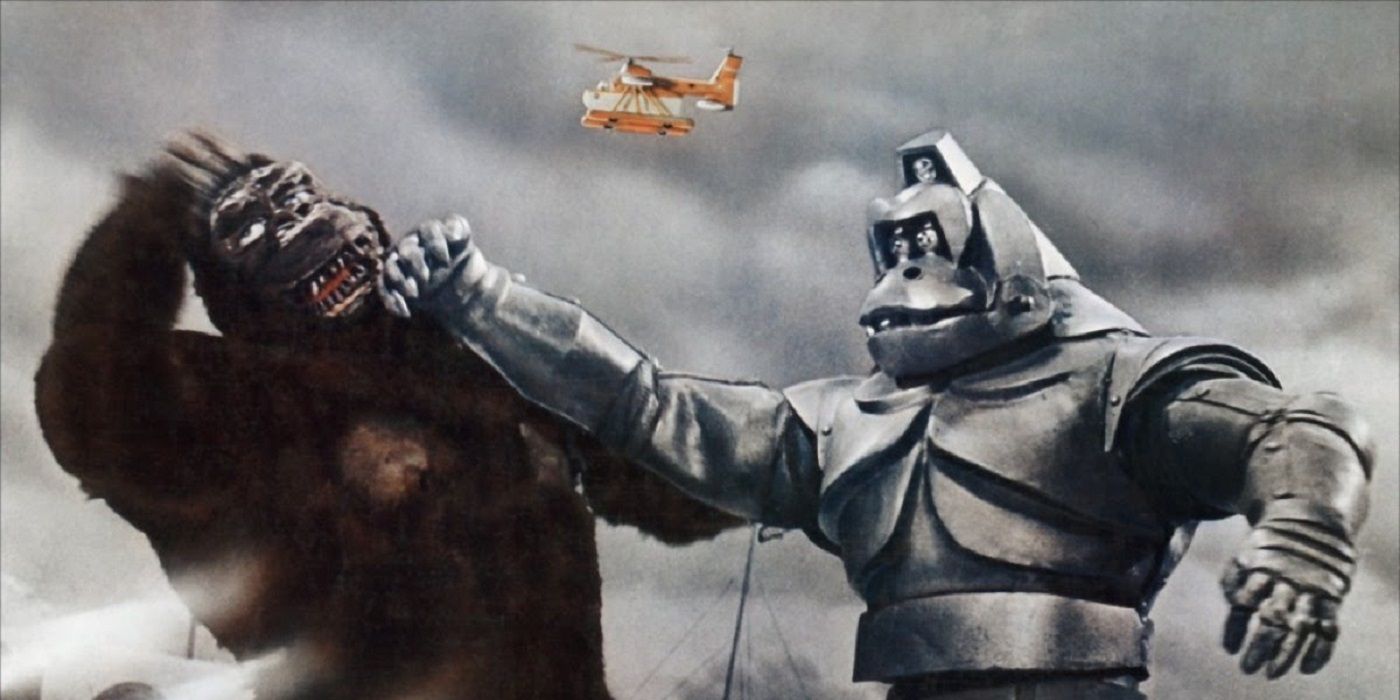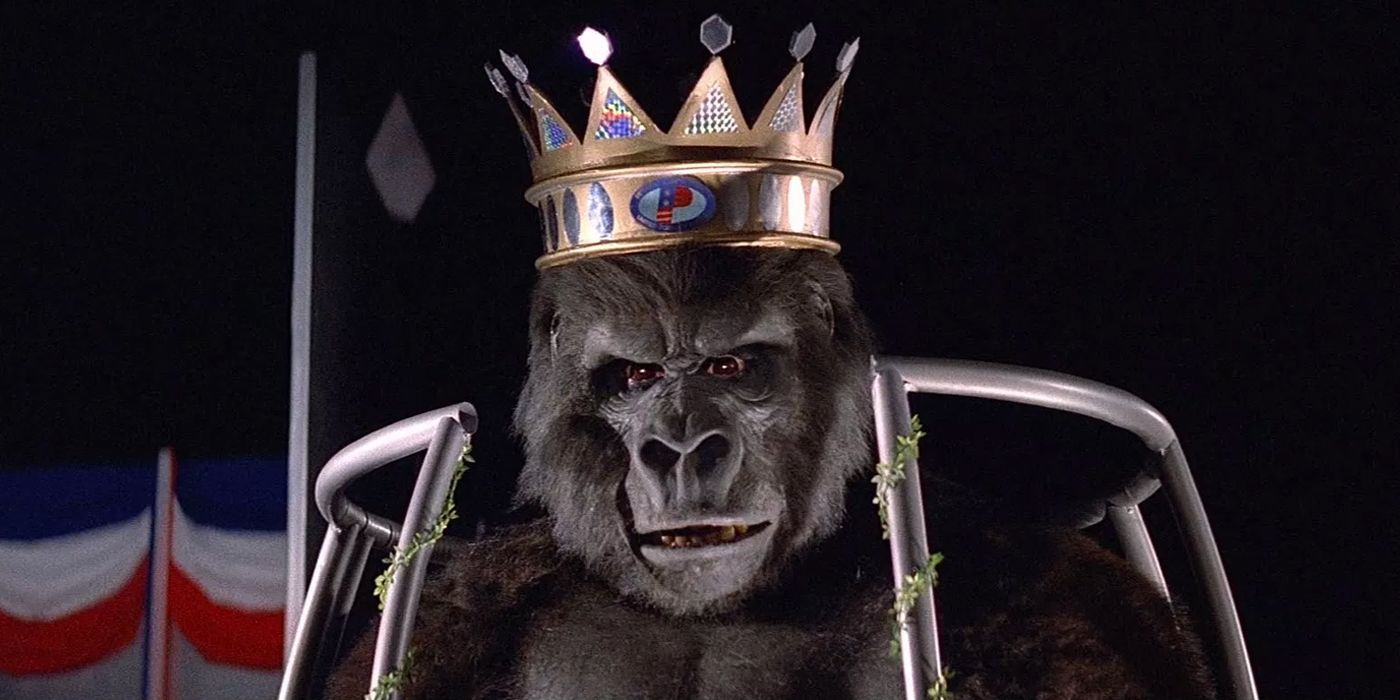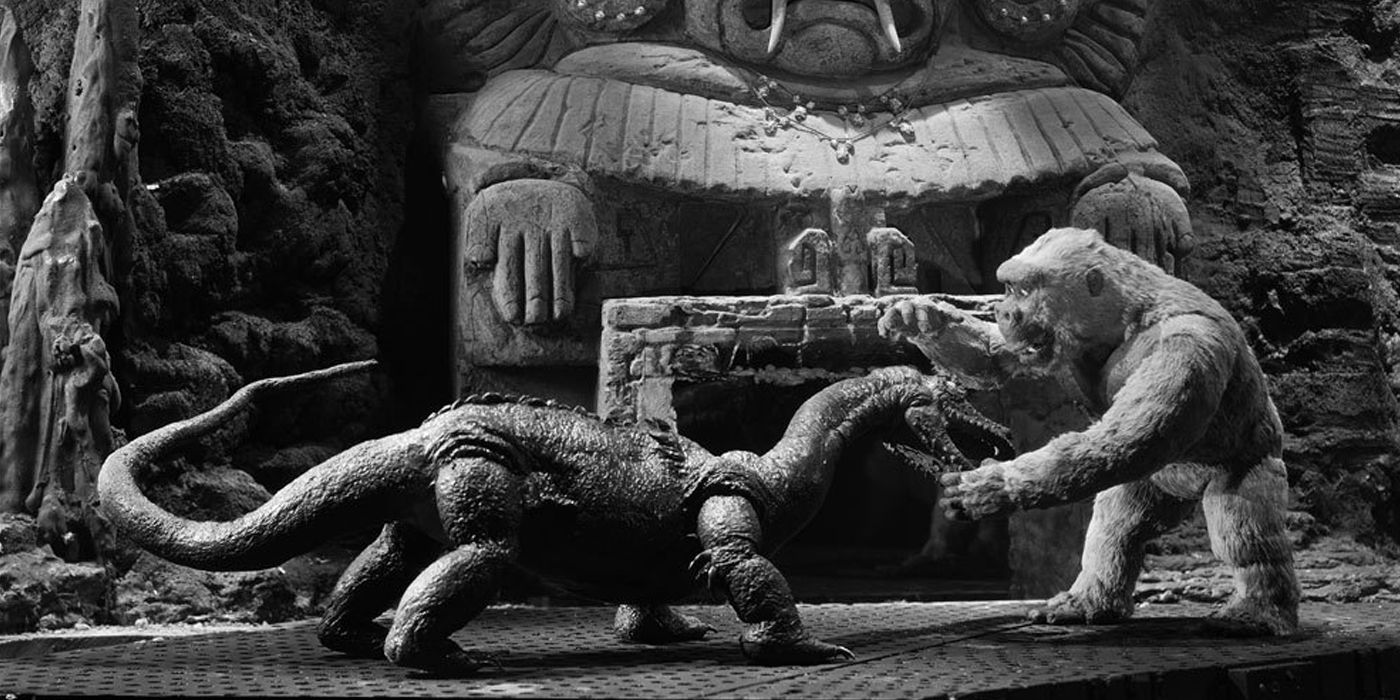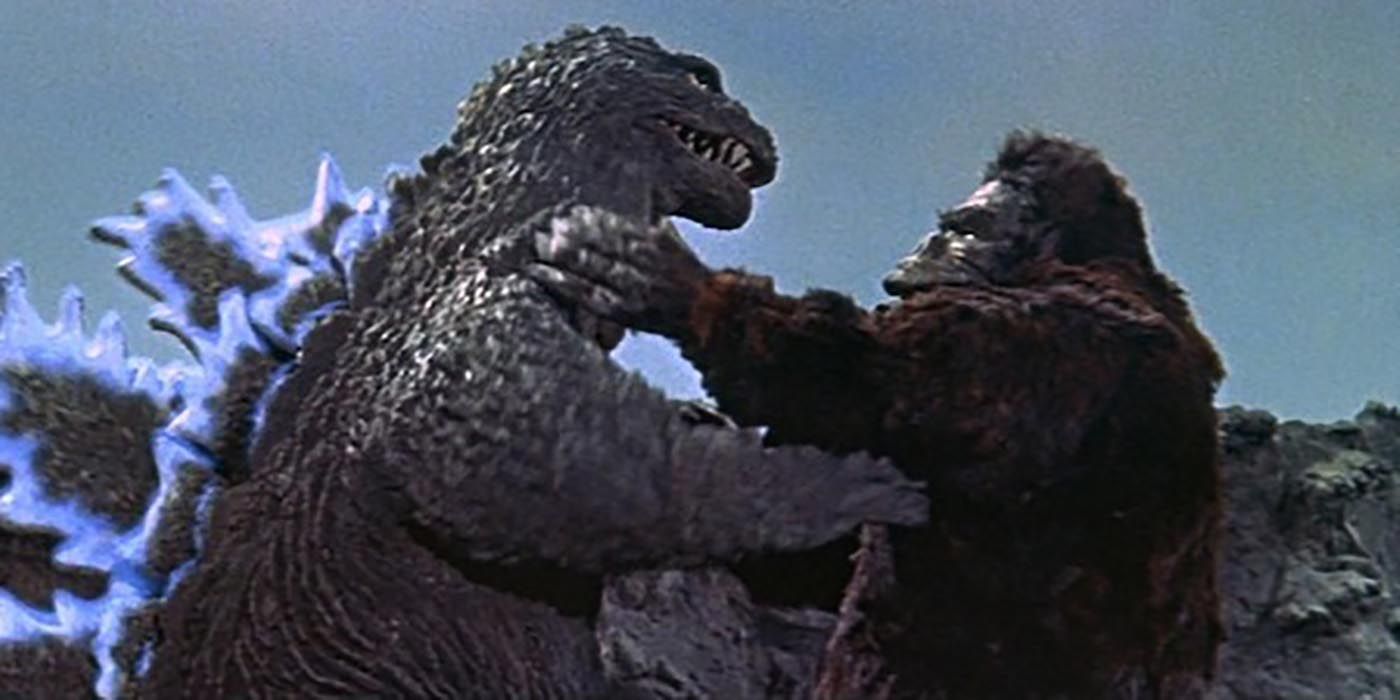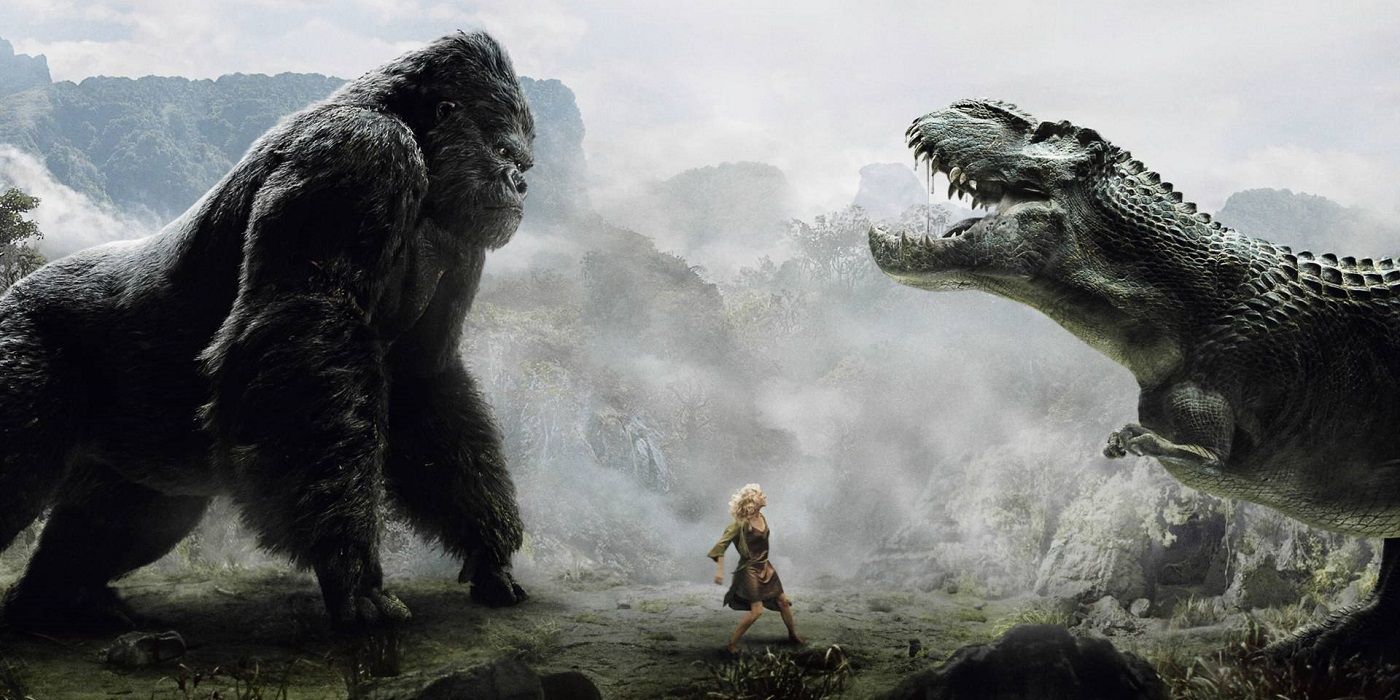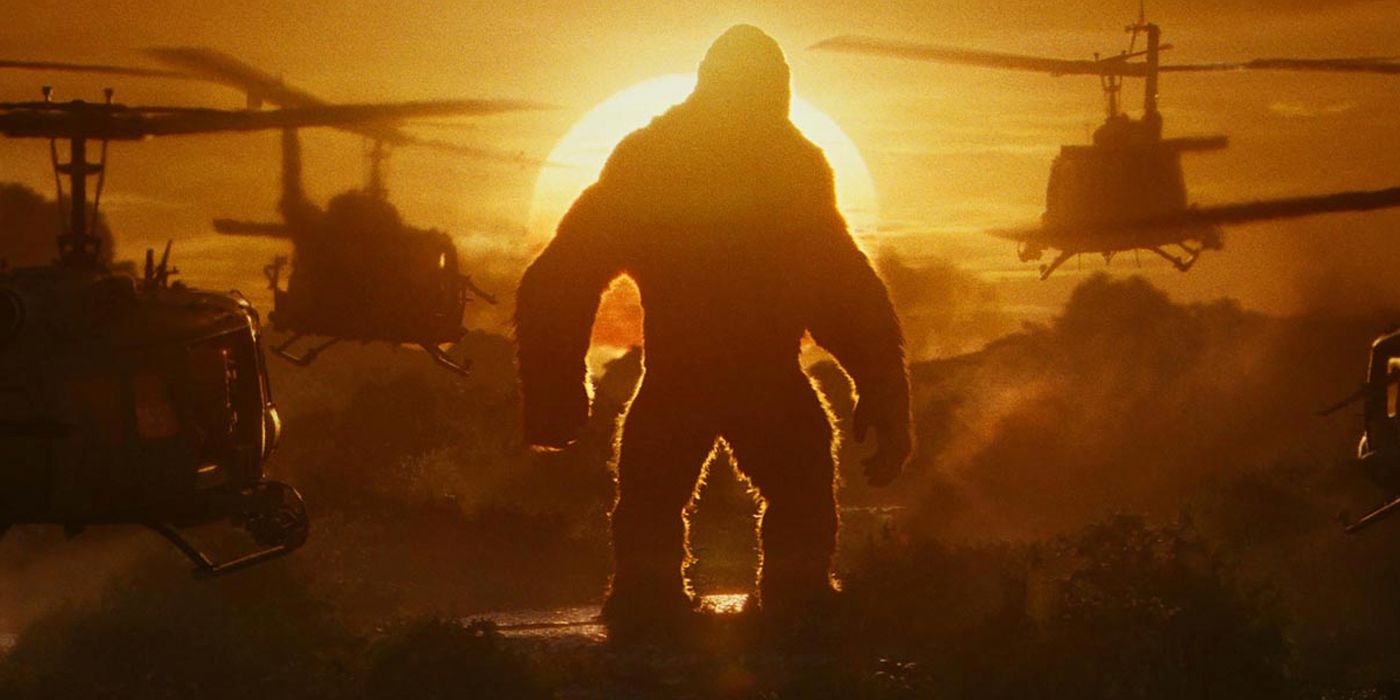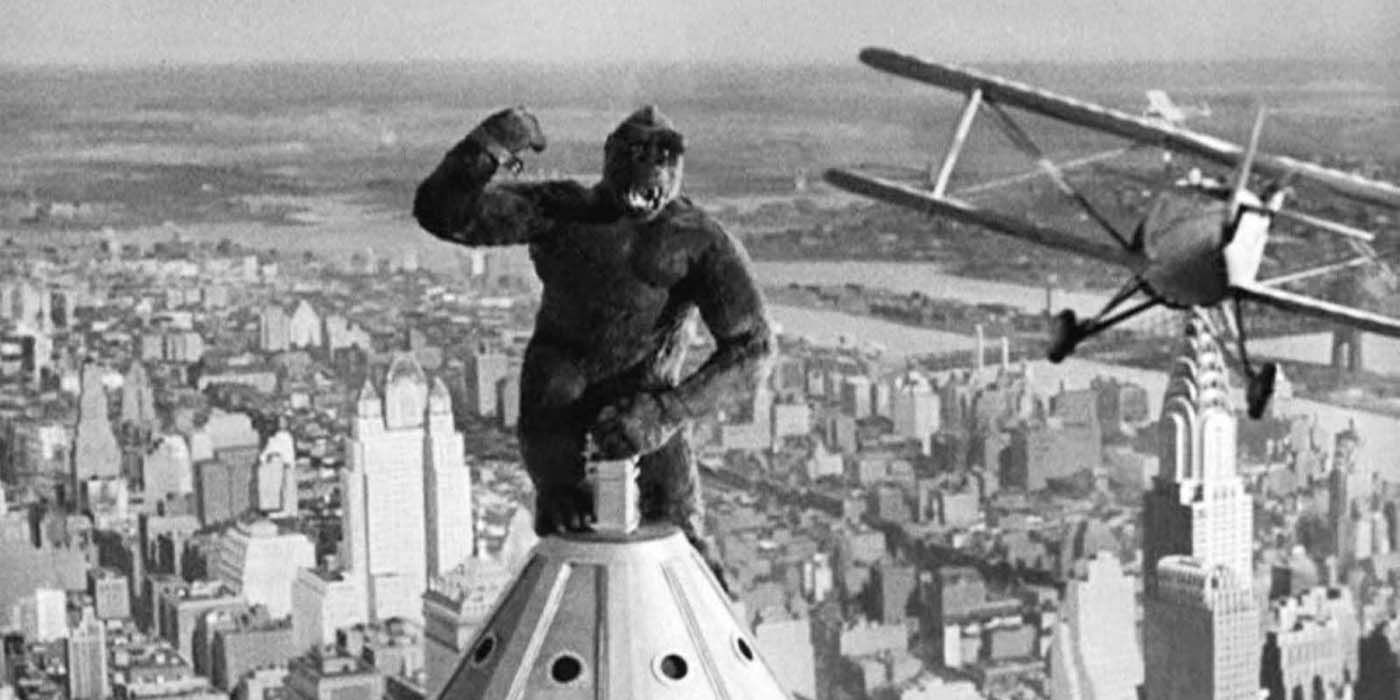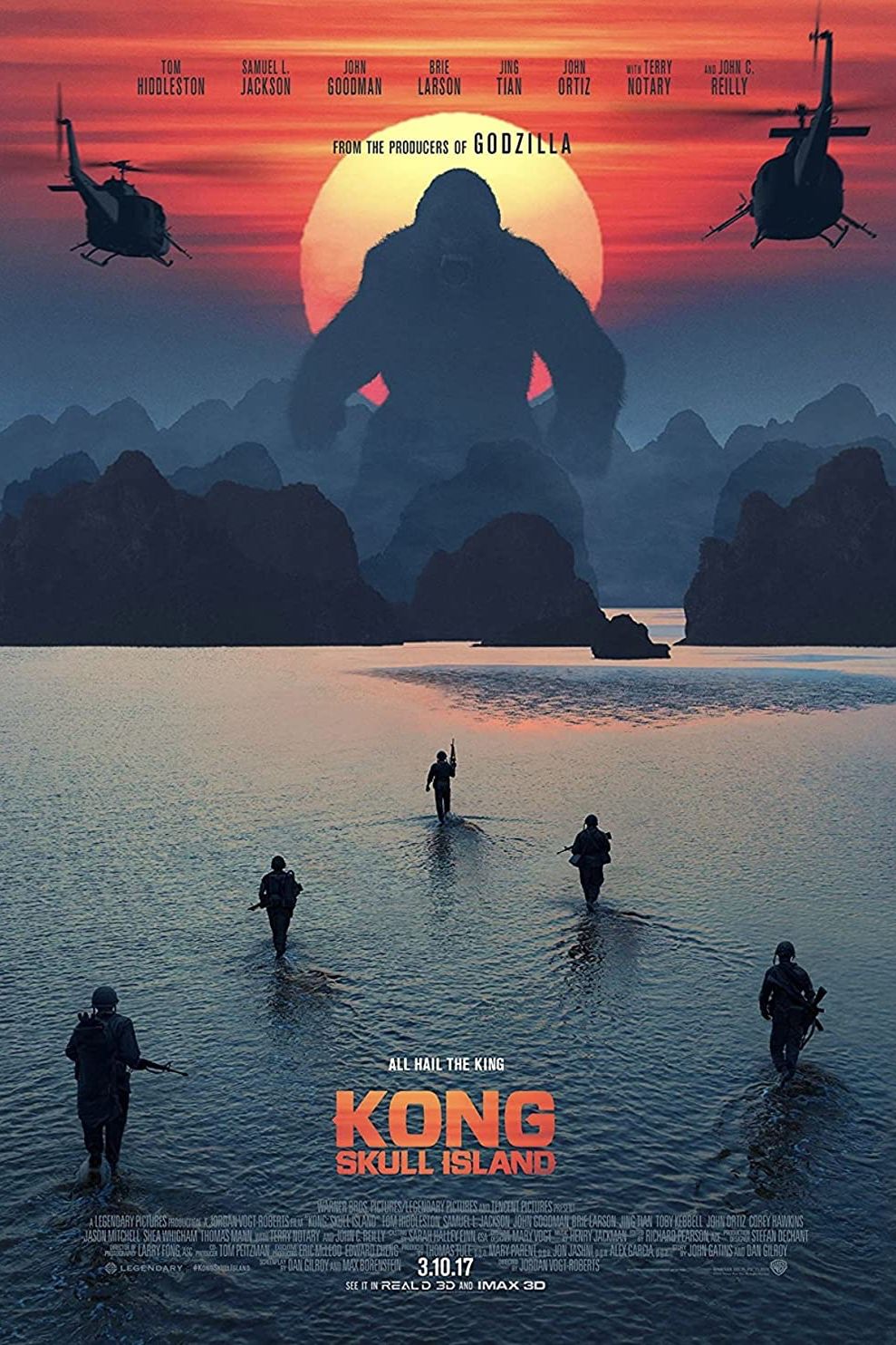In 1933, Merian C. Cooper and Ernest B. Schoedsack created the great American movie monster: King Kong. Although the giant ape of Skull Island is best remembered for his fateful stop-motion showdown with biplanes atop the Empire State Building, the eighth wonder of the world has lived long beyond his first tangle with beauty – there's been remakes, regional translations and some sequels that are best left forgotten.
The conventional Kong story, as laid out in the original, is that Kong lives on Skull Island (although the island wasn’t given that name on film until the 2005 remake) where he is worshipped by the natives and kept at bay with a giant, ancient wall. An American team comes along, the ape falls in love with their female member, and he’s captured and taken to New York. There he breaks his chains and runs amok before climbing to the top of the then-highest building, ultimately killed by gunfire (but set on his fate by love).
The latest outing, Kong: Skull Island, is making its way into cinemas now and diverges heavily from that narrative, with just a few sly references peppered throughout. It’s no less important a Kong movie, however, with the monster here set to take on the King of Monsters in 2020’s Godzilla vs. Kong. With a MonsterVerse in the making, this a version of the monster we’ve got for the next few years, but is it the best? Let's go through the murky history of King Kong movies and find out.
King Kong Lives (1986) – The Belated Sequel To The Terrible Remake
We’ll get to the 1976 remake soon, but first it’s worth commenting on its plainly bonkers sequel. We start with a university wanting to resurrect Kong using a mechanical heart - something they can finally do when a Lady Kong magically turns up (on the mainland, not Skull Island) for the required blood transfusion. Then they escape, get captured and by the end they have a baby. That is the plot of a real movie that was actually made.
It's just bad. Everything that didn't work in the original gets carried over, and the tonal jumps from cheese to faux emotion make it unclear what they're even going for. Really only recommendable to completionists, this is the worst King Kong movie (although there is a great moment with a golf ball).
King Kong Escapes (1967) - The Japanese Remake
King Kong Escapes is essentially a Japanese remake of the original King Kong. There are vast story alterations (the plot is driven by scientists wanting to use the monster to recover highly radioactive material) and a robot Kong to fight at the end, but the basic premise is broadly similar there's an expedition, a blonde to fall for and a tower-topping city finale. It’s often ignored because of the immensely successful predecessor, and while the whole thing is something of a curio, it ultimately isn't all that good.
It does have its merits, though. When you're dealing with pure Kaiju action - the centerpiece fights between the Gorosaurus and Mechani-Kong - it especially justifies its existence, especially in the Tokyo ending; because this Kong is bigger than the US version, he packs more of a wallop and causes greater destruction. Elsewhere, it's flat and unconvincing (something that isn't helped by the American edit).
King Kong (1976) – The Terrible Remake
For the first forty minutes or so, the 1976 remake feels like it’s going to be an at worst interesting exercise. It doesn’t flagrantly retread the original (in fact, some of its ideas – the storm surrounding the island and mapping it with seismic charges – were so interesting they were reused in Skull Island), but instead introduces a somewhat nibbling commentary on the oil industry, with corporation Petrox the ones heading to Skull Island, and early on looks great – the way the location shooting is handled is miles ahead of their contemporaries (one intense zoom-out is one of the best shots in all of all Kong movies).
But the moment Jeff Bridges and co. actually get to Kong, it spirals downwards fast. The effects are terrible; a mixture of marketing-focused robotics (mainly a laughably overused giant hand) and Rick Baker in a suit with barely serviceable human composition. Worse, they force the luscious island to be realized on echoey soundstages that look sub-Toho.
It’s a stark drop of quality, and the film never recovers – the plot is just too weak (Kong fights only a single other monster) and the dialogue incredibly corny; even back in New York, the fool-proof finale (which has the then-novel, now-eerie choice to use the World Trade Center in place of the Empire State Building) feels incredibly stagey.
Son of Kong (1933) – The Rushed Sequel
Cash-in sequels are nothing new. Just nine months after King Kong obsessed audiences, RKO followed it up with Son of Kong. Some of the main actors returned in a story that was part epilogue (we learn that Carl Denham is hounded with lawsuits after the events of the first film and so runs to sea), part animation showcase.
It’s rushed and you can really tell – despite similar locations, it feels much smaller than its predecessor and while the monster effects look great, none are as impressive as the first. And whereas the first film felt like a complete morality tale, the story here is hackneyed – the focus of the film is returning to the island through contrived reasons where they meet a somewhat comedic, smaller white Kong (his son) and just jape about. Then at the end, without warning, Skull Island collapses into the sea. That’s it. That’s the movie. A totally fine B-Movie oddity, but nothing remarkable.
King Kong vs. Godzilla (1962) – The First Showdown
Legendary’s Godzilla vs. Kong in 2020 won’t be the first time the two iconic monsters have shared the screen. In the 1960s, Godzilla studio Toho acquired the rights to Kong and set about making their own version more in-line with their immensely successful Kaiju movies.
The means for the fight make Batman v Superman look well-developed and the effects are weak (especially Kong's mask), but there’s definitely fun stuff in there. King Kong’s reveal fighting a giant octopus is the best original Kong idea this side of 1933, and when it comes down to it there is something inherently cool about the fight. It’s all just a little one-note.
A rather humorous urban legend suggested that there were two endings, one for each territory; in the US Kong won, in Japan Gojira did. Sadly, that was never the case, which is a shame – it’s more interesting than the rest of the film.
King Kong (2005) – The (Too) Massive Remake
Peter Jackson had been wanting to remake King Kong since before he took on The Lord of the Rings, but it was only after the landmark trilogy that he finally had the clout to achieve his vision. Being fair, Kong ’05 is the director's best post-Rings film, although that’s not saying much.
There are a lot of really good craft elements on show. Andy Serkis is the MVP as Kong, mixing animalistic impulse with genuine emotion, but the whole cast is interesting in a mostly good way (Jack Black should take serious roles more often). And while some of the CGI is wonky even by contemporary standards, the ideas behind the big action scenes are mostly solid. Fans of the original in particular will find a lot in there – the first act is littered with references to the 1933 version, with the film Denham is making is a pastiche of the original – that really shows off Jackson’s love of the material.
But, if anything, he loves it too much. With all the freedom an Oscar clean sweep affords, Jackson threw everything into the film, resulting in a movie that is simply too long. It takes an hour to get to the island and by the time you could have watched the original we’re still yet to get to the meat of the Kong adventure. Some films need three hours, but a deadly serious monster movie is no such epic. Whereas you can’t pull away from any of The Lord of the Rings when they come on TV, it’s all too easy to change the channel on this one.
Kong: Skull Island (2017) – The B-Movie Monster Flick
It’s very easy to compare Kong: Skull Island to Gareth Edwards’ Godzilla seeing as they’ll soon share the screen, but that doesn’t do Jordan Vogt-Roberts’ film justice. While there are links via the S.H.I.E.L.D.-esque Monarch and a shared approach to action (as well as an interesting contrast point in revealing the monster), it’s an altogether different movie.
Godzilla was a grounded reboot of the series, whereas Skull Island is more unashamed B-movie, with its focus on capturing the thrills that made Kong such a legend; it throws so many visual and visceral ideas out there and most of its sticks. Storywise it's a bit weak, although it still makes the smart idea to only namecheck the romance element that dominates all previous versions, replacing it with obvious-yet-effective Vietnam war parallels (the whole thing feels like an Apocalypse Now love letter).
This means that it doesn’t hit the same emotional high of Jackson’s film, but more modest aims make it more of a success. And for Kong fans, there’s a lot to enjoy too – the references aren’t overt, but plentiful nods to all previous films (bar King Kong Lives) are weaved into its structure.
King Kong (1933) – The Original Masterpiece
Eighty-four years of Kong and we're still nowhere close to topping the 1933 original. This film isn’t the best just because it was first, but because it best captures what King Kong is.
The core appeal is the stop-motion effects, with multiple fights between Kong and other monsters, humans and planes lovingly realized, and what makes them still effective today is how well integrated they are – from a 21st Century view it’s easy to see the lines, but the extent the filmmakers went to to maintain the illusion is staggering; particularly impressive considering we’re in the early talkie era (and reflected in a very self-aware screenplay that uses being about the movies to skirt around convention).
But what makes Kong so enduring is that he isn’t just a monster. The 1933 film is layered thick with Beauty and the Beast subtext - highlighting that this isn’t the story of a monster, but one of how love can tame even the most beastly heart. The ending is truly tragic, the ultimate product of misunderstanding, and while every subsequent film at least understood this, none made it such a seismic part as the first.

